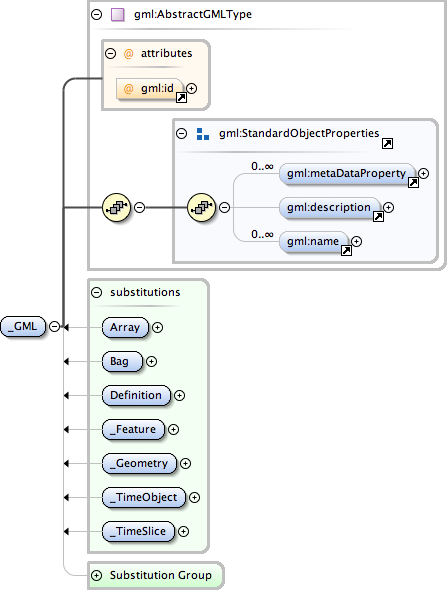| Namespace | http://www.opengis.net/gml | ||||||||||||
|
Annotations
|
Global element which acts as the head of a substitution group that may include any element which is a GML feature, object,
geometry or complex value
|
||||||||||||
|
Diagram
|
 |
||||||||||||
| Type | gml:AbstractGMLType | ||||||||||||
|
Properties
|
|
||||||||||||
| Model | gml:metaDataProperty* , gml:description{0,1} , gml:name* | ||||||||||||
| Children | gml:description, gml:metaDataProperty, gml:name | ||||||||||||
|
Instance
|
|
||||||||||||
|
Attributes
|
|
||||||||||||
|
Source
|
|
||||||||||||
| Schema location | http://schemas.opengis.net/gml/3.1.1/base/gmlBase.xsd |